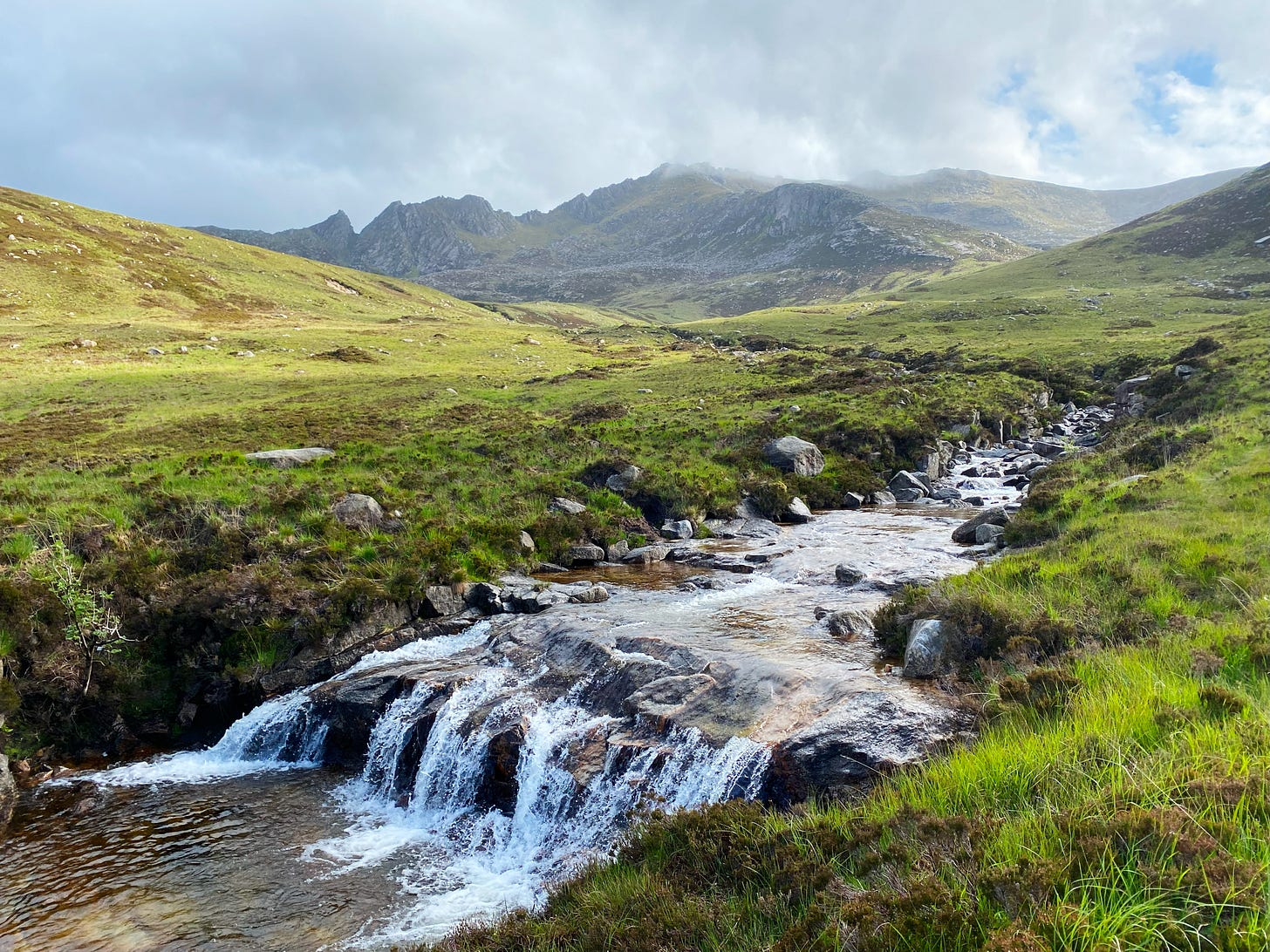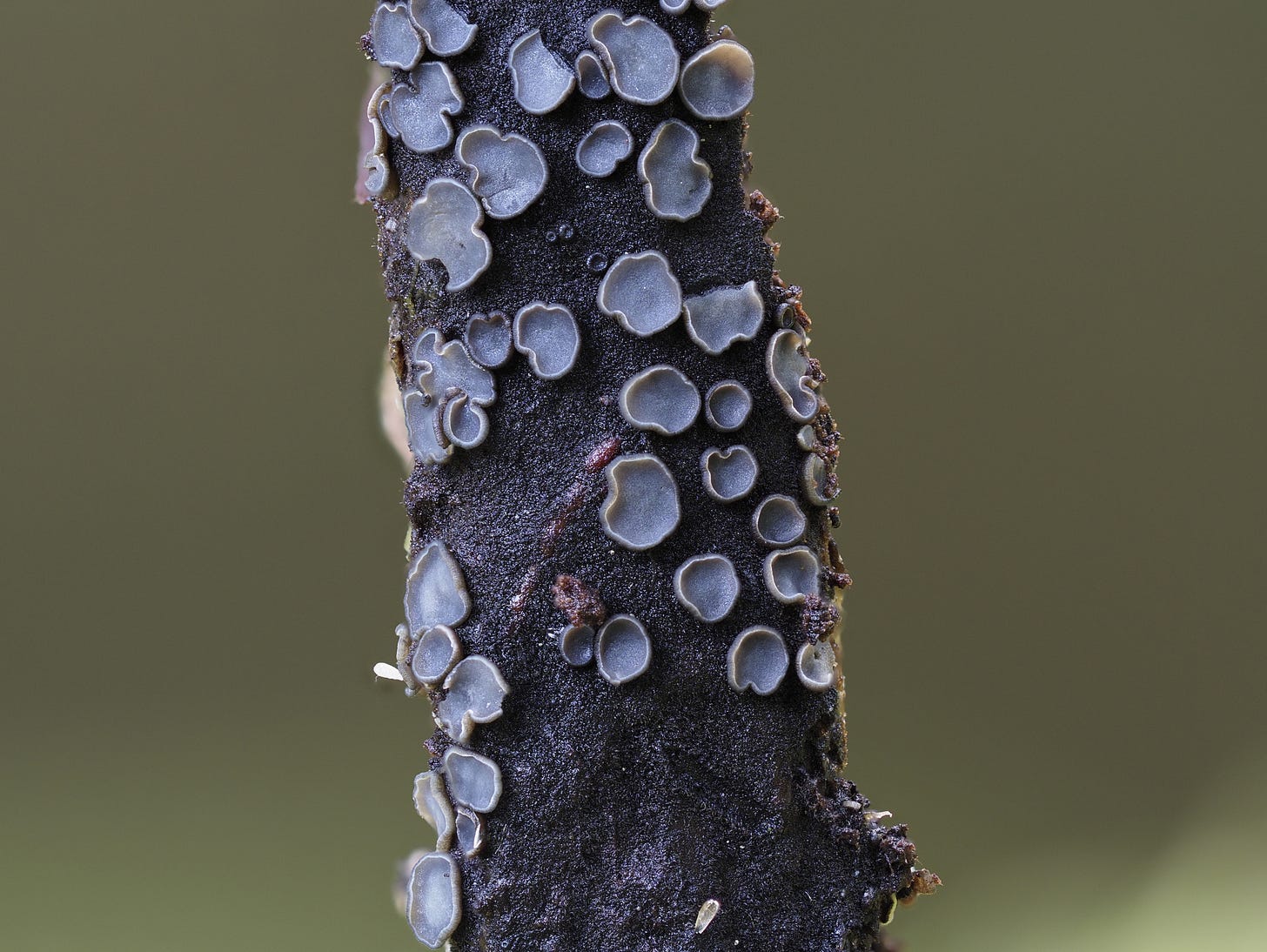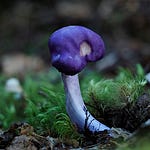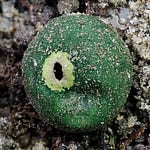June 2022
The Isle of Arran sits off the west coast of Scotland and is a special place that my wife and I explored extensively. For two weeks, we hiked and wild-camped the island.
We arrived by ferry from the town of Irvine and caught the bus in Brodick up north. Dropped off on the side of the road with only our backpacks and gear we’d need, we set out down towards the coast to find a place to pitch our tent and pray that the midges wouldn’t find us.
Midges or “midgies” (mi-jees) or “wee beasties,” as they're known in Scotland, are no joke. Throughout our journey, it was a constant battle to find refuge from the unrelenting barrage.
We hiked a path along the Sannox Burn up into the mountains of North Sannox and found the best spot up off the trail back in the woods, flat enough to pitch the tent and put the hammock up. Right behind us we had our own small waterfall and pool to bathe, and during the day, I’d spend hours slowly inspecting the forest floor, finding all sorts of interesting growth in the pine forest.
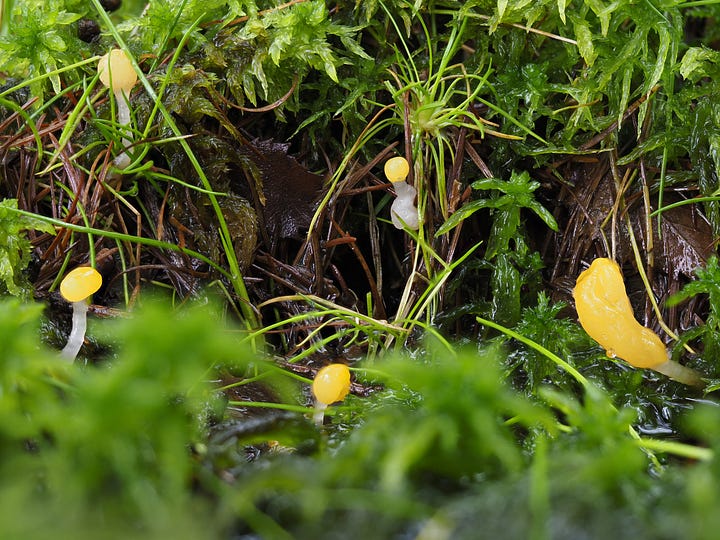
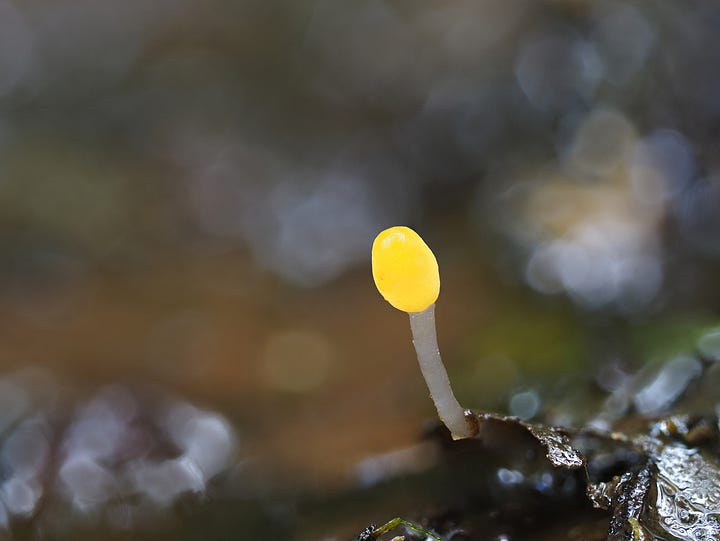
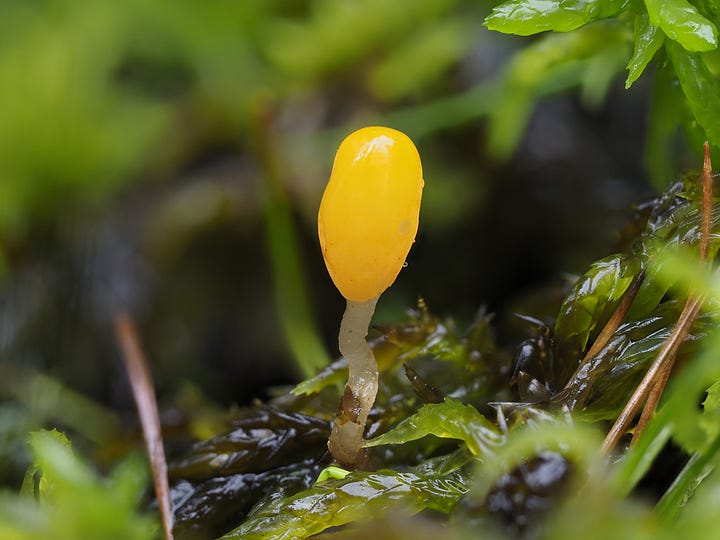
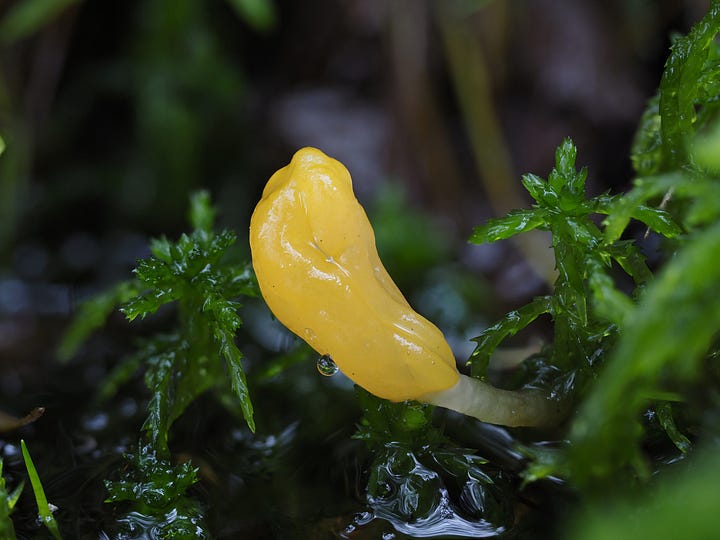
Bog or Swamp Beacons, as Mitrula paludosa are commonly called, were some of the first species I encountered. They are not hard to miss, as they stick out like bright yellow bulbs in wet, mossy swamp areas.
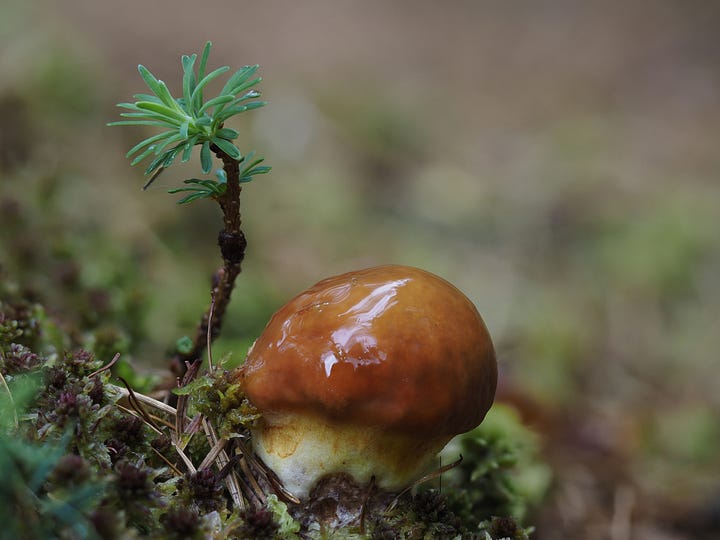

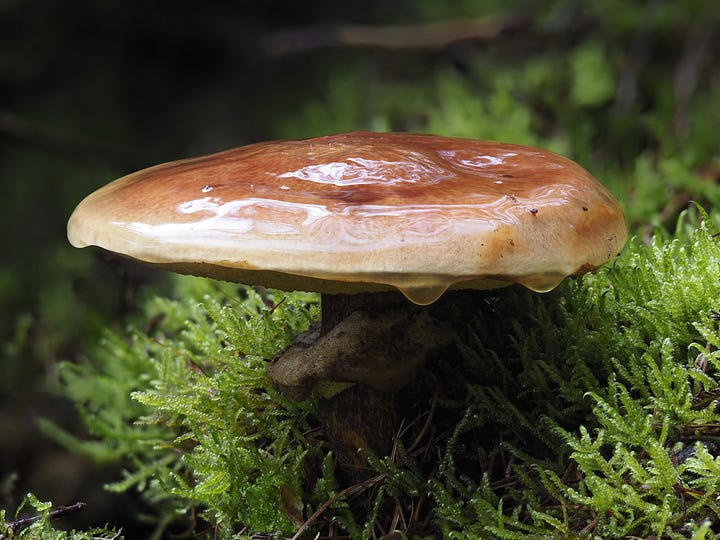
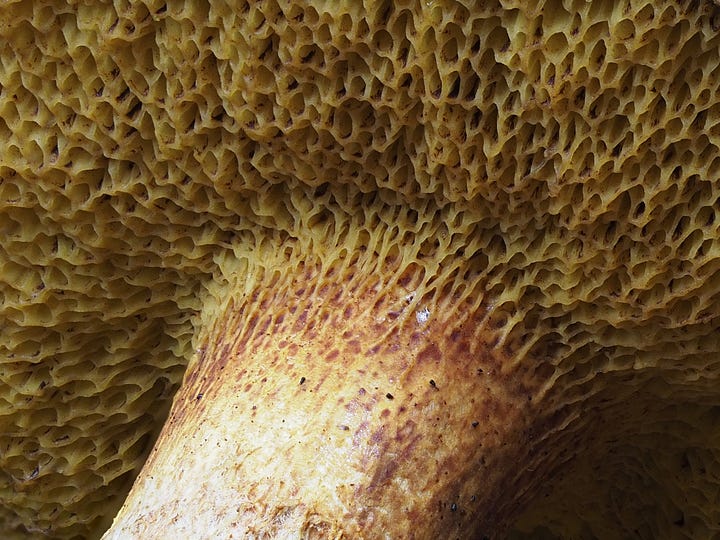
The most common edible mushroom was Suillus grevillei or Larch Bolete. I found many at different stages of growth, their viscid red-orange caps sticking out against the green forest floor. I picked a few, cleaned, washed, and cut them up to fry. The consistency was slimy, smooth, almost buttery, and didn’t taste like much — sustenance, I guess.
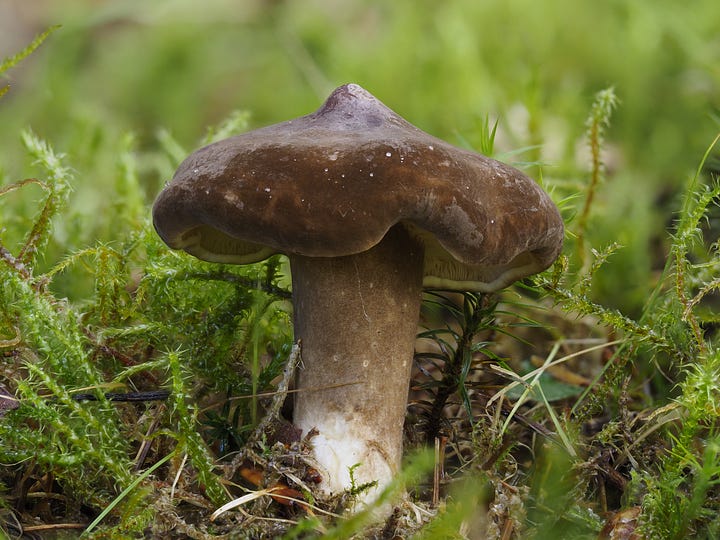
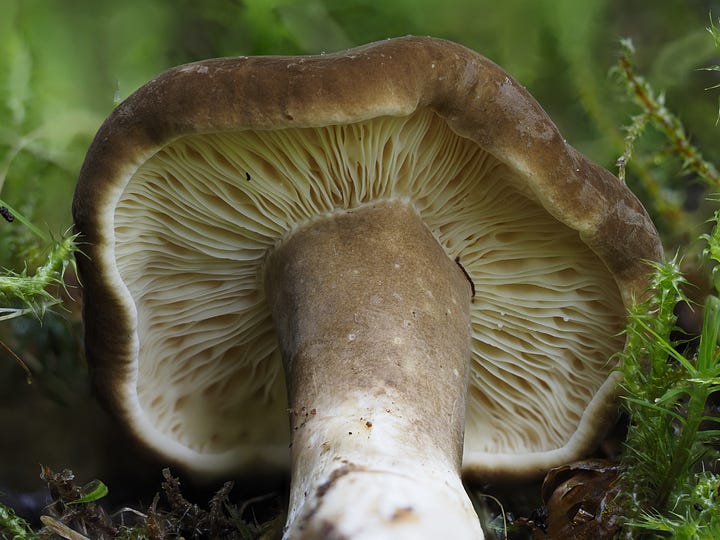
Another edible species I found was Lactarius lignyotus, aka Chocolate Milky. I didn’t eat these as I wasn’t familiar with different Lactarius species at the time and after my Suillus experiment and the fact I wasn’t desperate for food, I decided to hold off.
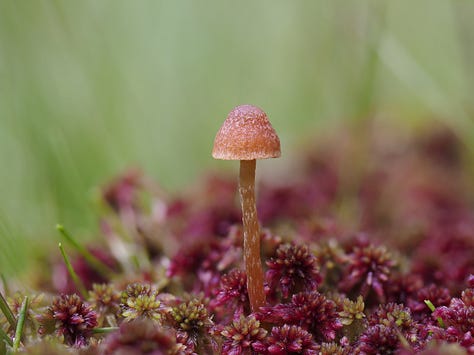
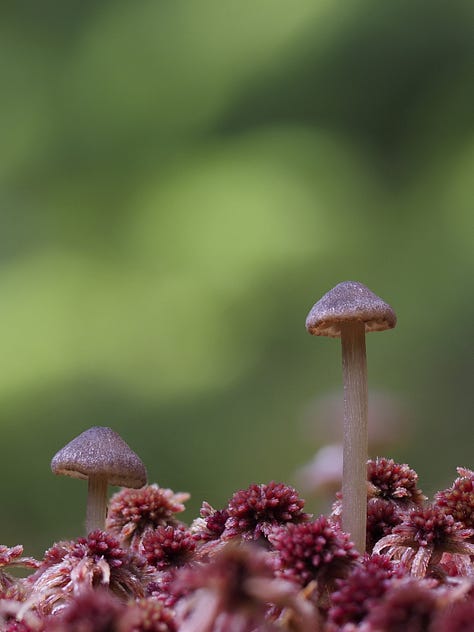

Many moss-loving, bryophilic mushrooms poked out of some beautiful purple, maroon-colored moss beds. And branches were covered in translucent-to-yellow jelly-like Calocera species.
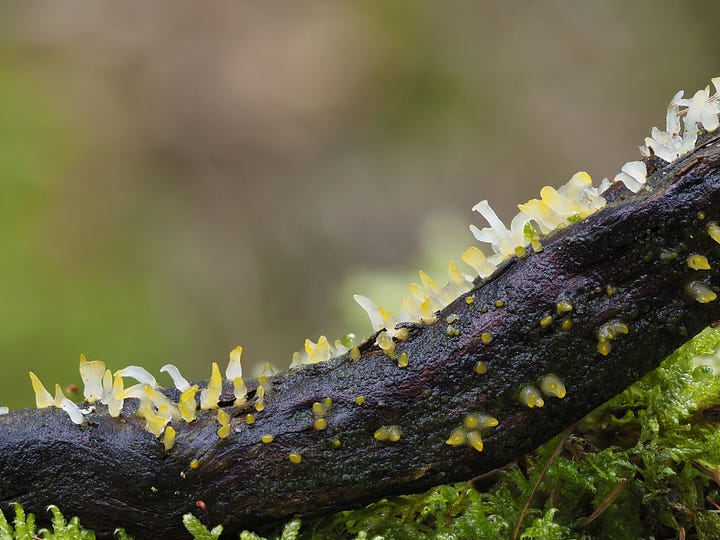
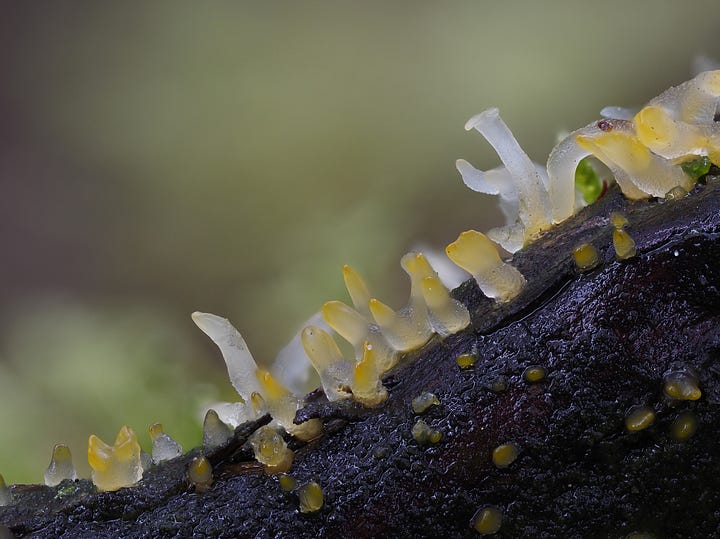
Because we brought a couple butane canisters and mini stove and were able to cook without starting a fire, using Birch Polypore wasn’t necessary, but this kind of mushroom is ideal to use as a firestarter, especially in really wet environments where it’s difficult to find dry kindling. The underside was soft, and I reckon the texture would’ve made for a decent pot scrubber or a loofah.
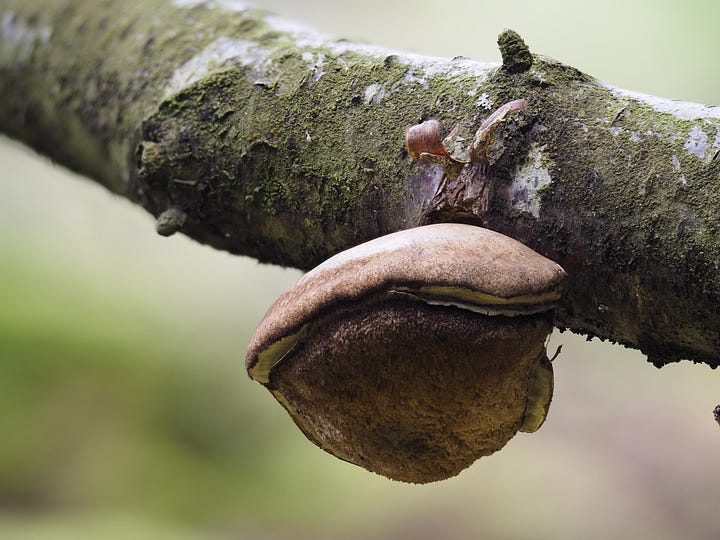

While our time on the Isle of Arran was cut short due to the midges driving us to a breaking point, testing our sanity, it was a memorable experience exploring Scotland over the summer.



